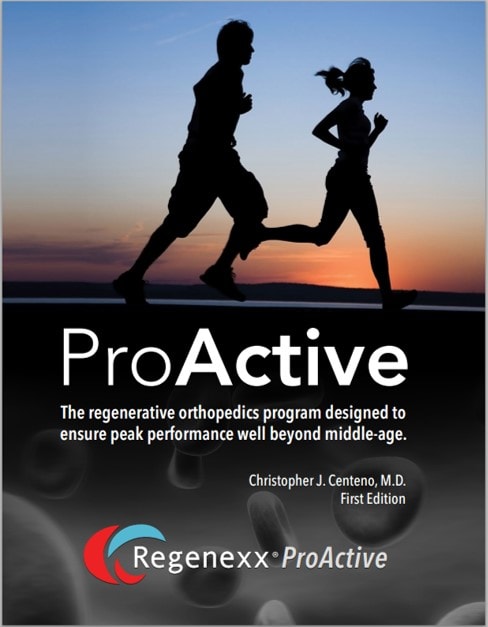Starting Exercise as Late as Middle Age May Lower the Risk of Heart Failure
In my continuing deep dive into how much exercise is enough to stave off heart disease as we age, is this interesting study. It may help answer the question of how many years of exercise in middle age it takes to lower the risk of heart failure as we get older.
I recently covered a study showing that even casual exercise for only two or three days a week was beneficial for the heart; however, the study focused on those who’d exercised for 25+ years. What about those who may not have committed to exercise earlier in life (i.e., they’ve lived a primarily sedentary lifestyle) but have started or are considering an exercise regimen in middle age and beyond? Specifically, can starting exercise in middle age lower the risk of heart failure, and if so, how much is needed? The results may surprise you.
The Heart Benefits of Starting Exercise in Middle Age
The mean age of over 11,000 participants in the new study was 60, and based on a questionnaire, these participants were assigned to one of three exercise categories: poor, intermediate, or as recommended (meeting the level recommended by the American Heart Association [AHA]: 75 minutes of vigorous or 150 minutes of moderate exercise weekly). Participants were monitored every year over an average span of 19 years.
The results? While those who participated in long-time exercise maintenance, understandably, appreciated the lowest risk of heart failure (31% reduced risk), those in the study who started AHA-recommended levels of exercise in middle age also benefitted from a significantly lower risk of heart failure after just six years of regular exercise (23% reduced risk). Even participants who started intermediate levels of exercise (up to 74 minutes of vigorous or 149 minutes of moderate exercise weekly) in middle age benefitted from lower heart failure risk (12% reduced risk). So in other words, if you’re middle age, it’s not too late to reap the heart benefits associated with starting an exercise program as long as you stick with it.
On the other end of the spectrum, researchers also determined that for those who followed a consistent exercise program and stopped exercising in middle age, after six years, there was a significant increase in the risk of heart failure.
Being Proactive About Health and Exercise in Middle Age
The biggest single thing that I see day in and day out that knocks people out of daily exercise is injury. For example, a common story these days is a patient who begins to let exercise slip in middle age and then decides he or she wants to get back in shape. They begin an intense exercise program (CrossFit is a common one) and get injured and then they can’t exercise. So how can you avoid this fate? How can you be the 70-year-old who is still kicking it like you’re 50?
First, don’t ignore the small things. If you’ve reached middle age, you’ve probably already experienced at least some minor musculoskeletal issues. These small things, however, can be early warning messages and can become big things if left unaddressed, so ignoring persistent aches and pains by popping Motrin or an over-the-counter anti-inflammatory to function is a bad idea. Get small things evaluated and treated early, before they become chronic issues that can disrupt or stop your exercise program, which would, in turn, increase your risk of heart disease.
Second, throwing out the junk food and making healthy food choices as an ongoing lifestyle is imperative. You can also control chronic middle-age inflammation. Glucosamine and chondroitin, for example, have been shown to work together to protect cartilage and relieve inflammation. Curcumin, known for its anti-inflammatory and antioxidative properties, is also faring well in the research on bone and joint health.
Finally, don’t agree to orthopedic surgery just because your MRI shows a tear (e.g., knee meniscus, hip labrum, shoulder rotator cuff, anterior cruciate ligament, etc.) or most any other musculoskeletal issue. Surgery can result in a structure that is never quite like the original. It can disrupt function and decrease performance, and many orthopedic surgeries, such as knee meniscus surgery, have been shown to be no better than fake surgeries or PT. With nonsurgical options now available through interventional orthopedics, orthopedic surgeries should be reserved for only the most extreme musculoskeletal issues.
Want to learn more? Take an hour or so to read my book, Regenexx Proactive (click on the cover image to see the full PDF):
The upshot? It’s never too late to start exercising. Conversely, if you stop, all it takes is a few years to lose the heart benefit. So focus on being proactive and making sure that little injuries don’t blow up and knock you off your game!

If you have questions or comments about this blog post, please email us at [email protected]
NOTE: This blog post provides general information to help the reader better understand regenerative medicine, musculoskeletal health, and related subjects. All content provided in this blog, website, or any linked materials, including text, graphics, images, patient profiles, outcomes, and information, are not intended and should not be considered or used as a substitute for medical advice, diagnosis, or treatment. Please always consult with a professional and certified healthcare provider to discuss if a treatment is right for you.
